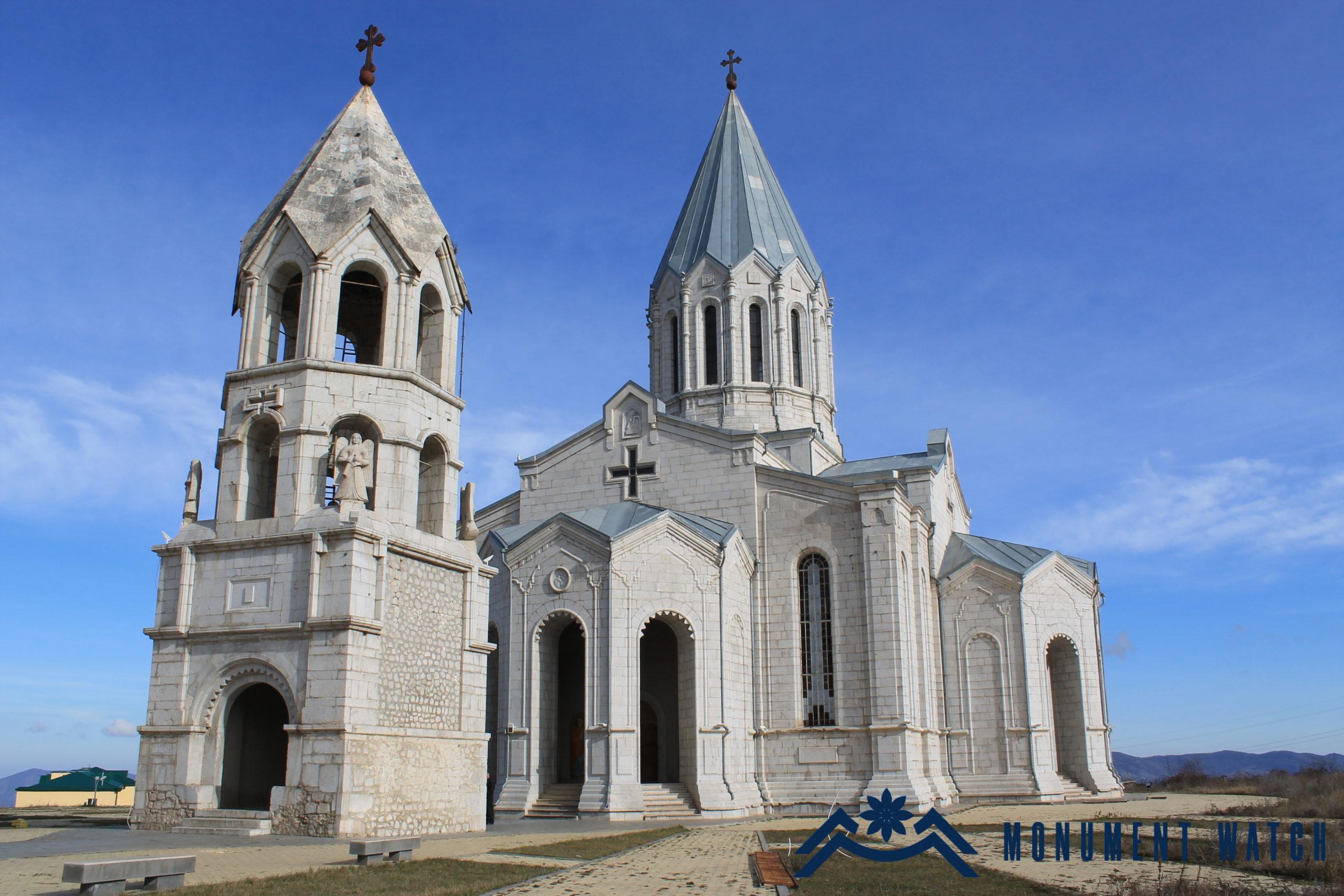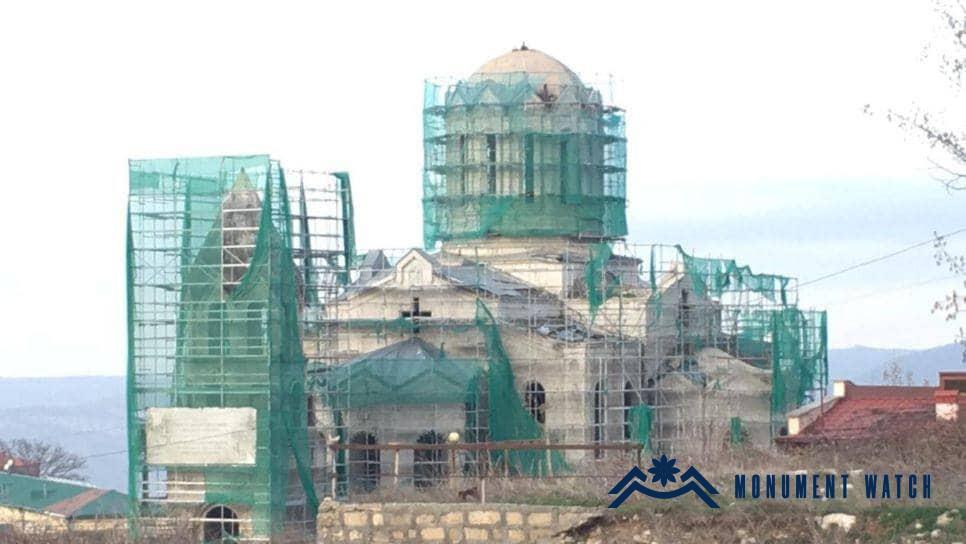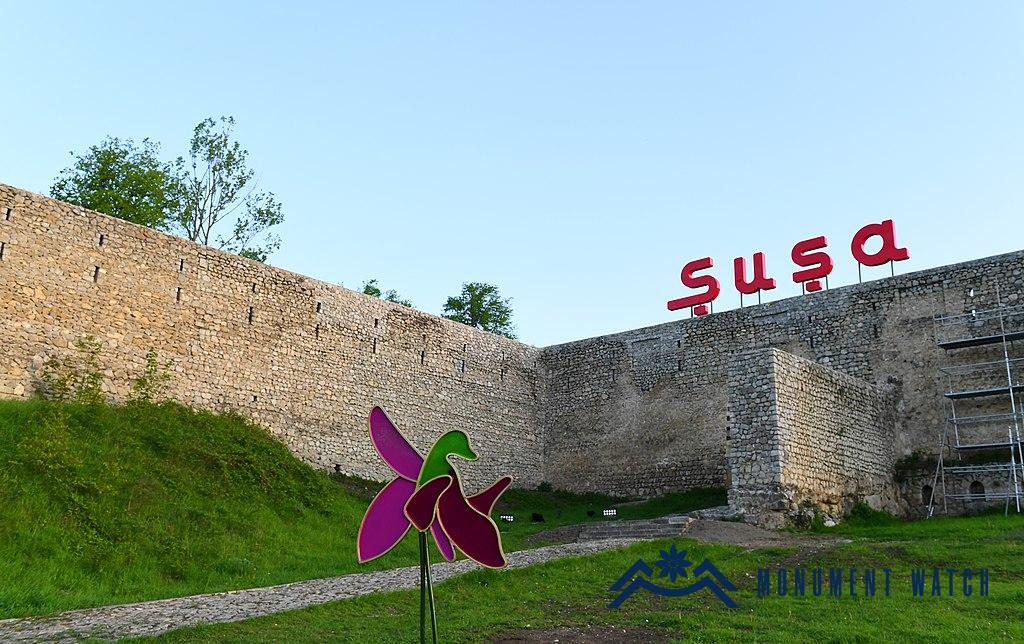Azerbaijan is stripping Shushi’s cultural heritage of its Armenian origin
Starting in 2020, the city of Shushi has become a focal point of Azerbaijan's deliberate agenda to erase and appropriate Armenian historical and cultural heritage in the occupied regions of Artsakh. Following the cessation of war, Azerbaijan swiftly enacted a state policy aimed at reshaping and confiscating the Armenian historical and cultural landscape of Shushi. This policy traces back to the Soviet era, specifically the 1960s when the history of Shushi City underwent revision. As a result, scientific and popular literature focusing on the city began to portray Shushi as exclusively Azerbaijani, gradually minimizing references to its Armenian cultural and historical heritage, and ultimately omitting them altogether. It is important to highlight that between the 1960s and 1992, the Azerbaijani authorities successfully undertook the destruction and alteration of a substantial portion of Shushi's Armenian cultural heritage, which encompassed the city's Armenian cemeteries as well.
Following the occupation of the city by Azerbaijan in 2020, a fresh phase in the de-Armenization of Shushi emerged. Novel narratives were introduced, notably designating the city's central symbols, the Ghazanchetsots Church of the Savior and the Church of the Kanach Jam, as Russian Orthodox churches. Within these churches, the Azerbaijani authorities commenced "rehabilitation" initiatives, primarily aimed at erasing the Armenian essence of these structures, to showcase this to the international community. The fundamental objective behind these alterations to Armenian churches and other structures is to eliminate the Armenian characteristics of Shushi. This culminates the trajectory set in motion by the state dating back to the 1960s.
Azerbaijan's President Ilham Aliyev has played a pivotal role in the political landscape concerning Shushi. Since the city's occupation, he has made numerous visits to Shushi, often accompanied by family members. These visits are primarily intended for promotional and display purposes. Aliyev's speeches, particularly those delivered from the city of Shushi, consistently convey a similar message and content. Every action, speech, and declaration carried out by the President of Azerbaijan in Shushi has been marked by a deliberate inclination to project his triumph and assert dominance over the situation. In his initial visits, Aliyev was unabashedly displaying swaggering and derision. This demeanor is especially evident during his first visit right after the occupation, where Aliyev is visibly present in the administrative building of Shushi (Şuşi yox, Şuşa! https://www.youtube.com/watch?v=mQTfkK_LWJM).
The target audience for these proclamations and addresses from Shushi primarily encompasses the Armenian community, with a specific focus on the Armenians of Artsakh. Particularly noteworthy is the paradox that the ostensibly peace-seeking President of Azerbaijan, situated in the occupied Shushi—where the city's entire image has been dramatically altered under his directive—issues threats to Armenians and even urges them to abandon their homeland should they not comply with his demands. He made these remarks during a press conference held in Shushi and in an extensive interview conducted by the Euronews TV channel. These statements were in response to inquiries about the Armenians of Artsakh. (President Ilham Aliyev Answered the Question of Gela Vasadze on the Reintegration of the Armenians of Karabakh, https://www.youtube.com/watch?v=aO4m7wWKc1A, Interview of President Ilham Aliyev to Euronews TV channel, https://www.youtube.com/watch?v=aP21JUpQUho).
The Azerbaijani authorities attach significant importance to symbols. Notably, in Shushi, the "Shushi Declaration" was signed between Azerbaijan and Turkey, which appears to be directed specifically against Armenia. Turkish President Recep Erdogan's visit to Shushi resulted in the announcement of a Turkish consulate being established there. Furthermore, a poignant symbol is the demolition of the parliament building constructed by Artsakh authorities in Shushi by the Azerbaijani side, subsequently replaced by a hotel. This location hosted the Shushi media forum in July 2023, adding to a series of symbolic gestures that seem to have no end.
The Azerbaijani authorities are actively engaged in portraying Shushi as a cultural and spiritual center within the context of the Muslim and Turkic world. In doing so, they are noticeably sidelining the city's extensive Armenian cultural heritage, its historical significance, and the multitude of monuments. The various festivals held in Shushi also contribute to this agenda. While ostensibly labeled as cultural events, their primary underlying theme appears to underscore the Azerbaijani identity of the city.
The central narrative in the propaganda surrounding Shushi focuses on the extensive destruction and displacement allegedly caused by Armenians since 1992, juxtaposed with the claimed resurgence of the city from 2020 onward. Through this narrative, the Azerbaijani authorities seek to assert their ownership over the city. In his speeches, Azerbaijan's president states explicitly and in footnotes that Shushi has nothing to do with Armenians. Aliyev's propaganda videos depict a scenario where, under his directive, mosques, and streets of the city swiftly undergo restoration. Notably, the restoration of the Upper Mosque of Shushi, the Saatli Mosque, catches attention. This mosque had previously been renovated by the "barbaric Armenians" before the war. Additionally, the videos showcase streets and infrastructure that were reconstructed before the Azerbaijani occupation of 2020. This propaganda not only prominently features Ilham Aliyev but also involves his family members. The attempt to reshape the city's true identity is evident in how Shushi is portrayed as a venue for traditional Azerbaijani celebrations. During 2021-2022, President Aliyev initiated the observance of Nowruz and various other festivals in Shushi as part of this effort.
The capture of the city of Shushi by Azerbaijan in the last three years has become an integral component of the modern Azerbaijani identity. In this context, the Ophrys caucasica(orchis) flower, found on the Shushi plateau and its environs, has been adopted as a new symbol of Shushi and their triumph. It has been dubbed "xarı bülbül" (onion thorn), signifying their victory and presence in the region. Images of this flower have gained extensive prevalence, becoming ubiquitous throughout various mediums. The Azerbaijani authorities are actively promoting this symbol beyond their borders as well, showcasing it on medals, commemorative items, postcards, and various objects distributed to visiting delegations. This emblem has also been embraced as a tourist commodity, being readily available for purchase across Azerbaijan.
Hence, it is evident that the Azerbaijani anti-Armenian sentiment and propaganda prominently feature the occupied city of Shushi, emphasizing those who are portrayed as having no affiliation with Armenian history and culture.


